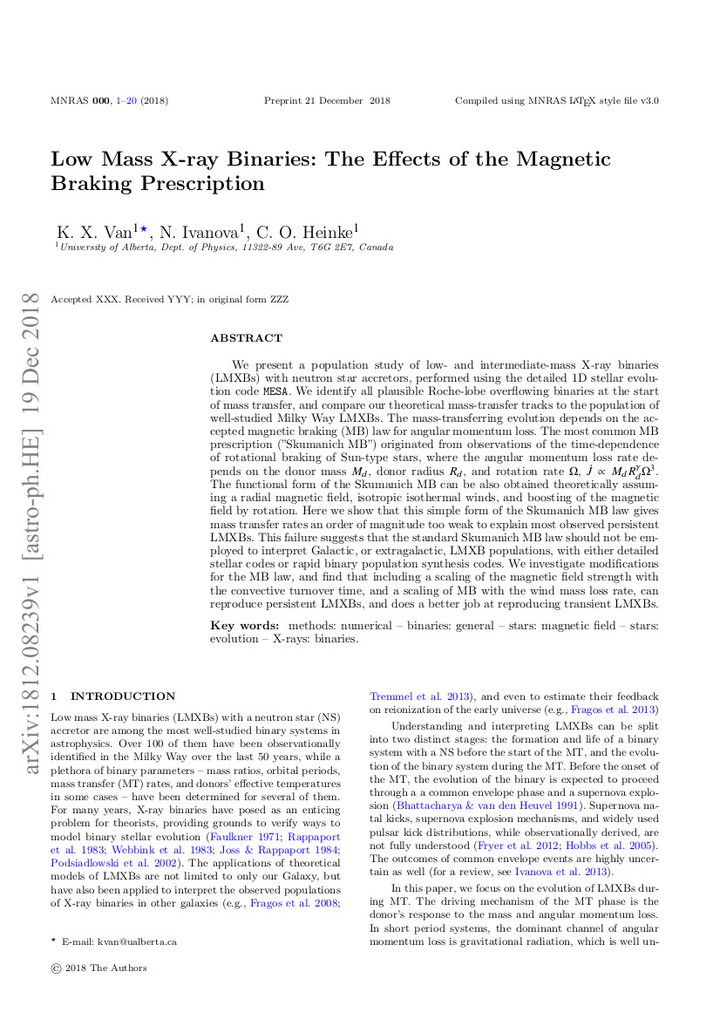
Abstract
We present a population study of low- and intermediate-mass X-ray binaries (LMXBs) with neutron star accretors, performed using the detailed 1D stellar evolution code MESA. We identify all plausible Roche-lobe overflowing binaries at the start of mass transfer, and compare our theoretical mass transfer tracks to the population of well-studied Milky Way LMXBs. The mass-transferring evolution depends on the accepted magnetic braking (MB) law for angular momentum loss. The most common MB prescription (Skumanich MB) originated from observations of the time-dependence of rotational braking of Sun-type stars, where the angular momentum loss rate depends on the donor mass $M_d$, donor radius $R_d$, and rotation rate $\Omega$$,\dot{J} \propto M_d R_d^{\gamma} \Omega^3$. The functional form of the Skumanich MB can be also obtained theoretically assuming a radial magnetic field, isotropic isothermal winds, and boosting of the magnetic field by rotation. Here we show that this simple form of the Skumanich MB law gives mass transfer rates an order of magnitude too weak to explain most observed persistent LMXBs. This failure suggests that the standard Skumanich MB law should not be employed to interpret Galactic, or extragalactic, LMXB populations, with either detailed stellar codes or rapid binary population synthesis codes. We investigate modifications for the MB law, and find that including a scaling of the magnetic field strength with the convective turnover time, and a scaling of MB with the wind mass loss rate, can reproduce persistent LMXBs, and does a better job at reproducing transient LMXBs